Floating islands help to increase habitat diversity at KFBG
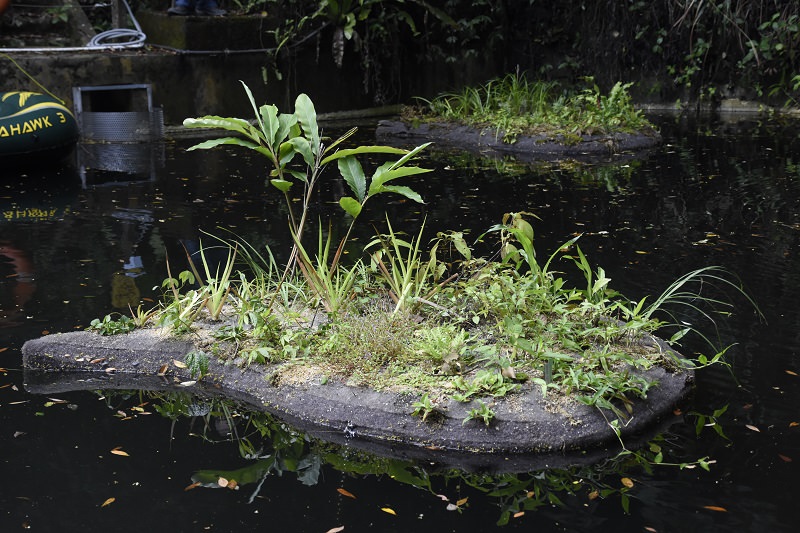
Since the 1950s, KFBG has been reliant on the natural stream water which flows down our hillside (only the Sun Garden Café is linked to Government water). We collect stream water at several reservoirs, carefully conserving water for aquatic wildlife (read more about our self-sufficiency objective in water supply).
Bordered by plants, the Magnolia Reservoir, the largest on our hillside, teems with freshwater fish and crustaceans. However, as the reservoir’s structure has aged, staff discovered in 2016 that water was leaking from cracks in the bottom of the reservoir. As a remedy, the reservoir walls were coated with a new waterproof layer.
The remedial work required disturbing the creatures that had taken up refuge in this man-made structure, so the idea of developing a floating island was considered under our environment enhancement project. With support from the Flora Conservation Department and Facilities Department, a plan was devised to develop two small artificial islands in order to mitigate disturbance and improve the biodiversity of the reservoir.
Floating islands are installed worldwide to provide refuge above and below the waterline for wildlife to hide, rest and reproduce in island deficient water bodies. They also help lower the water temperature, and improve water quality through the action of water plants.
In January, a period of preparation began. We obtained ready-made floating substrate mats – containing non-toxic, recycled plastic – and planted native plants on the substrate to be later floated on the reservoir.
A wide variety of plants species were selected to attract a range of wildlife and to determine which plants performed best on the artificial environment and under natural conditions.
Creeping plants, such as the Obtuse Didymostigma (Didymostigma obtusum) and Common Pratia (Pratia nummularia), provide a carpet of verdant green and disguise the artificial material. Plants like the Grass-leaved Sweet Flag (Acorus gramineus) and Rough Pellionia (Pellionia scabra) lean half-submerged along the edges of the islands, allowing creatures to climb out of the water and onto the island, and providing newts with vegetation to lay eggs upon.
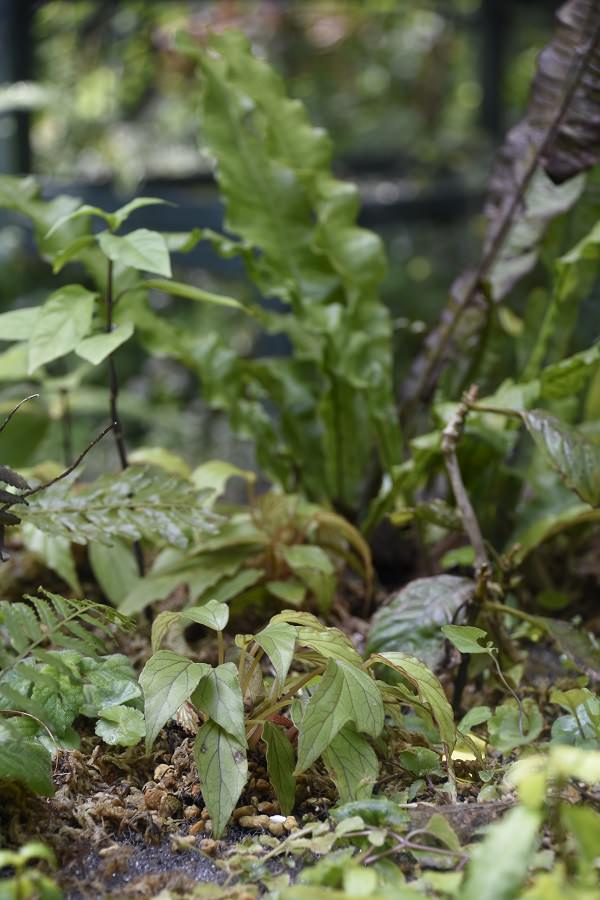
Begonia hongkongensis

Rotala rotundifolia
The island also features locally endemic species, like the Hong Kong Balsam (Impatiens hongkongensis) and Hong Kong Begonia (Begonia hongkongensis). Some of the species like the Large Bract Murdannia (Murdannia bracteata) and Round-leaved Rotala (Rotala rotundifolia) produce beautiful flowers.
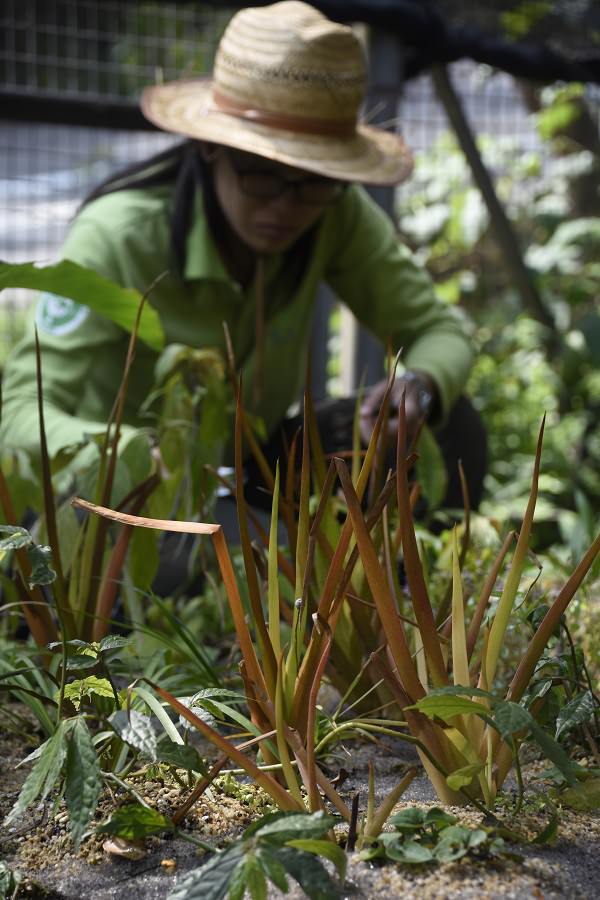
Staff planting Philydrum lanuginosum onto one of the islands
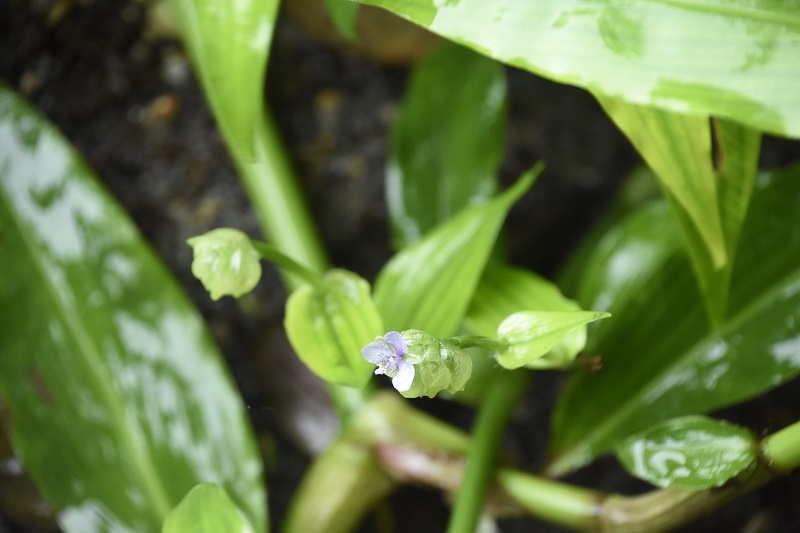
Murdannia bracteata
When designing the floating islands, a key challenge is to build up the composition of suitable native aquatic plant species as these are not readily available commercially. The planting process posed another challenge because it started in winter when growth was very slow for most plants and progressed into an unseasonably hot and dry period that put pressure on the plants that are normally associated with high humidity.

The islands were finally completed and carefully crane-lifted onto the Magnolia Reservoir
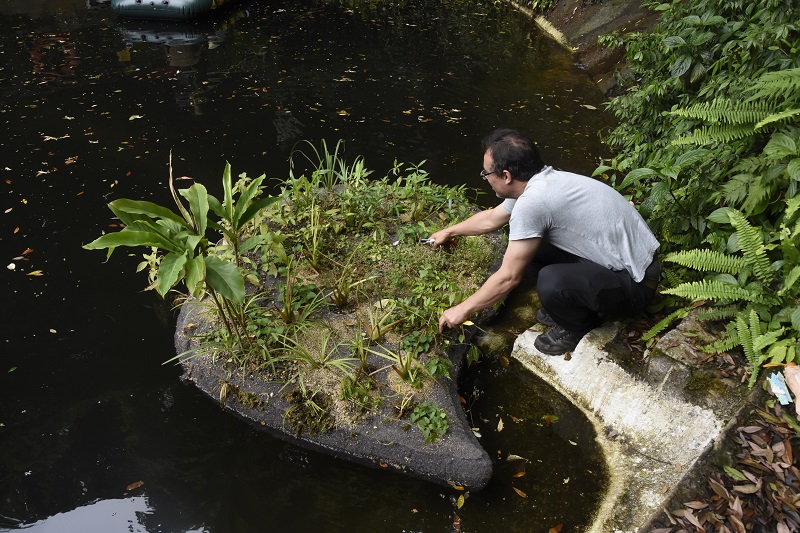
Staff putting the finishing touches on one of the floating islands
In April, the islands were finally completed and carefully crane-lifted onto the Magnolia Reservoir. Each island was anchored to the bottom by two chains and concrete blocks to prevent the islands from moving and from being washed away.
Staff will monitor the plant and animal life that start to colonise the island. As the plants thrive, the roots of a number of species are expected to push through the artificial substrate and hang in the water column, providing underwater habitat in conjunction with the new lush surface cover. We hope the island will encourage more creatures to colonise the reservoir and also provide cover and breeding opportunities for species that already inhabit the water body. If the trial is a success, we hope to carry out similar enhancement modifications to other reservoirs at KFBG.
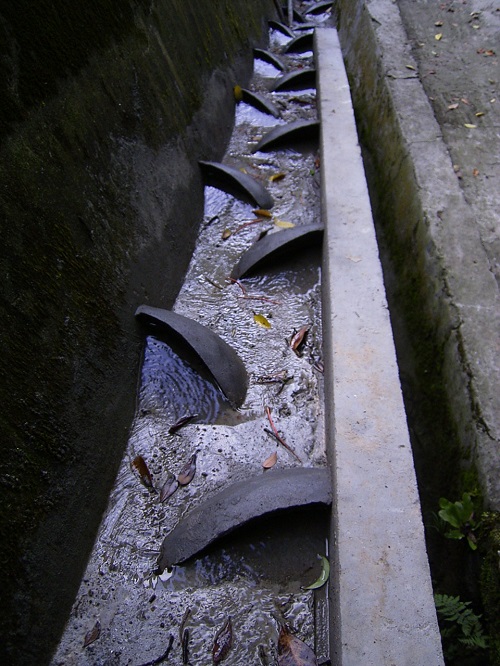
A fish ladder was installed along the side of the reservoir in 2006
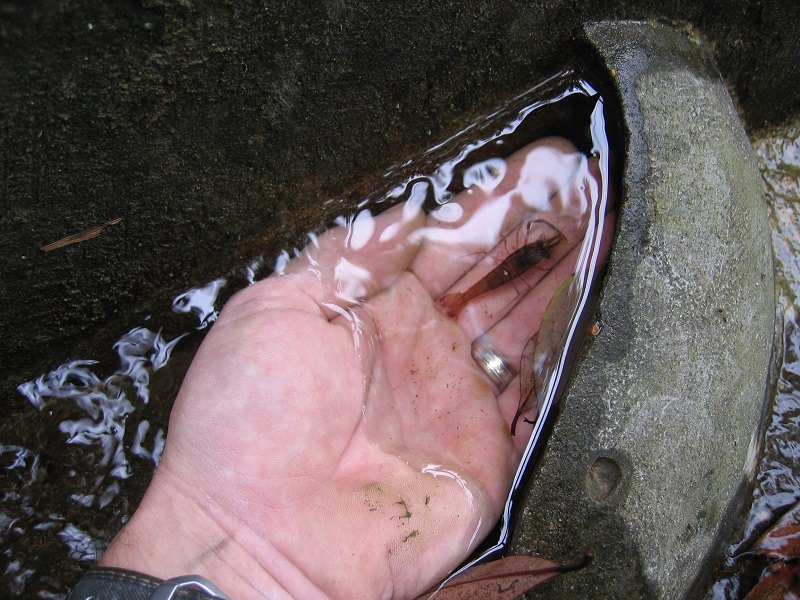
One of the first users of the fish ladder
In fact, this was not the first time the Magnolia Reservoir was targeted for enhancement work. A fish ladder was installed along the side of the reservoir in 2006 to allow freshwater animals to move to and from the upper and lower stream, and to facilitate return of wildlife to the upper stream when washed down stream in heavy rainstorms. It proved to be a success in enabling frogs, turtles, loaches, shrimps and snakes to travel along a series of ascending water pools forming an aquatic staircase.
We believe wildlife habitat enhancement features like the fish ladder and artificial floating islands have the potential to be replicated not only at KFBG but more widely in Hong Kong wherever there is a need or an opportunity to enhance the habitat value and increase the diversity of flora and fauna occupying man-made water features situated in or close to natural habitats.

